

 Travel Information Peru A-Z | Overview | Tour Recommendations
Travel Information Peru A-Z | Overview | Tour Recommendations
|
Holidays |
At locations above 2,500 m altitude, it is a frequent and occasionally life-threatening disease caused by too quick of an ascent. Symptoms appear, however, after 24 hours at high places. When climbing a maximum of 300 m daily, however, it rarely manifests itself. Warning symptoms are: irregular sleep, headache, dizziness, vomiting and increasing shortness of breath. In case these symptoms do not disappear after a break / night sleep, descent to lower altitudes is recommended. The most effective therapy is a descent to an altitude below 2,000 m. All ages are affected by altitude sickness.
Please check the current entry and visa requirements with your embassy.
Europeans and North Americans require for their stay of up to 183 days a passport valid for at least another 6 months. Children’s passports must have a photograph. For tourist stays of up to 183 days, visas are not required. At the moment of entering the country, please make sure that your intended stay time is registered by the Peruvian immigration officer in your passport or tourist card (Tarjeta Internacional de Embarque/Desembarque – must always be filled in!). Otherwise, it may happen that the officer arbitrarily limits that permit to 30 days, although you may want to actually stay for, say, 45 days.
Banking
Travellers should carry U.S. Dollars or Euros, since they may be exchanged everywhere in the country. Other currencies are accepted in Lima only to a limited extent, in other locations not at all. Banks and exchange offices charge high fees. Officially, only the Banco de la Nación is entitled to exchange money; however, numerous casas de cambio and some of the major hotels are authorized branches of the national bank. Casas de cambio are known for their convenient exchange rates and expedite service. Money exchanges are accepted by banks and some hotels, however at less convenient exchange rates.
Banking hours: Mon - Fri 09:00 a.m. – 05:00 p.m., Sat 09:00 a.m. – 01:00 p.m.. In Summer, hours may differ slightly.
Climate
Peru’s climate is divided by two seasons – a rainy period and a dry season; these, however, vary according to the respective geographical region:
In general terms, the Western Andes are dry. This part of the Andes Mountains sees its dry season from May through September. Although the nights may be quite cold at this altitude, very low temperatures are rather rare. In the dry season, during the daytime the weather is warm and sunny.
In the Montaña Region and the Eastern Andes, the rainy season lasts from October through May, with a maximum of precipitations generally in the month of January.
The Selva Region has a tropical climate, year round. The rainy season starts in December and lasts until April. You should note, however, that there may be rain also during the dry season.
The Costa Region is known for its humid and cloudy “winter”, lasting from June through September, with a minimum temperature of 14° Celsius. In summer temperatures my easily exceed 28° Celsius.
Communications
Mail: Airmail to Europe and North America may take up to two weeks to arrive. Outside Lima, mail services are less reliable. Mail addressed to P.O. boxes within Peru takes approx. four days to reach its destination; however, delays are always a possibility. Hours of Lima’s main post office are: Mon - Sat 08:00 a.m. – 06:00 p.m. and Sun 08:00 a.m. – 12:00 p.m.
Telephone: Direct Distance Dialing: International area code: +51. There are public pay and
Card phone booths. Telephone cards are sold in kiosks and supermarkets. Make sure you have the card belonging to the company corresponding the phone you are going to use. To reach Information dial 103 (service is in Spanish only). Fax devices are available in some hotels.
Internet: There are internet cafés in major cities.
Currency
1 Nuevo Sol = 100 céntimos. Bank notes circulate in denominations of 200, 100, 50, 20 and 10 S/.; coins of 5, 2 and 1 S/. and (not so frequently) 50, 20, 10 and 5 céntimos. Virtually anywhere in Peruvian cities, the U.S. Dollar is accepted for payment. In tourist centers, also the Euro is increasingly accepted.
It is recommended to carry low denomination US$ bills and bills in local currency. Soles are especially useful for smaller expenses and transactions. Beware: damaged bank notes may sometimes be rejected.
There are ATMs in all major cities and tourist sites. There you may also more conveniently use ec-/Maestro cards and PIN codes to withdraw money (in local currency and U.S. Dollars) than with credit cards.
When using ATMs be sure to find the Cirrus and Maestro logos belonging to the MasterCard family. They are likewise represented on all ec-/Maestro cards of international banks. Fees for withdrawals are individually determined by Peruvian banks. For example Interbank and Banco de Crédito accept European ec-/ Maestro cards in Peru.
Credit cards by American Express, Diners Club, MasterCard and Visa are accepted by most restaurants, hotels and service providers in Lima. Outside the capital city, however, payments with credit cards may sometimes be more difficult.
Customs
Articles to be brought into Peru free of duty are: 400 cigarettes or 50 cigars (persons over age 18); 3 bottles of alcoholic beverages (not exceeding a total of 2.5 l) (persons over age 18); 2 kg of food; new goods or gifts up to a total value of 300 US$.
Electric power
220 V, 60 Hz; in Arequipa 220 V, 50 Hz and in Iquitos 110 V, 50 Hz; corresponding plugs are required.
Geography
Peru is located at the western coast of South America, south of the equator between 0 und 18º latitude, and 69 und 81º longitude. To the north, the country is bordered by Ecuador and Colombia, to the east with Brazil and Bolivia, to the south with Chile and the west with the Pacific Ocean; it is divided in four regions: Costa, Sierra, Montaña and Selva. Peru has a total surface of 1.28m km2 and a coast line 3,079 km long. Lima with its 8.3m inhabitants (incl. the harbor city of Callao) is the country’s capital; it is located in the Costa Region that consists of a narrow coastal strip with desert-like characteristics and is partly artificially irrigated. The major part of the Indian population lives in the Sierra Region. The Peruvian Andes reach an altitude of over 6,000 m. The Montaña Region extends between the Andes Mountains and the jungle in the Eastern part of Peru. This fertile sub-tropical territory has so far been hardly developed. The international highway, currently under construction can already be used on some sections. The Selva Region, i. e. the Amazon lowlands in the Eastern part of the country, hosts a great many mineral resources. Its population consists mainly of Indians and mestizos. Also European (mainly from Spain), Chinese and African settlers have established themselves there.
Government
Peru is a presidential republic since 1980. The country’s current political constitution dates from 1993. The Parliament has 120 members. Independence from Spain was achieved in 1821.
01.01. New Year's Day
Easter: Holy Thursday & Good Friday
01.05. Labor Day
29.06. St. Peter and St. Paul
28./ 29.07. Days of Independence
30.08. Santa Rosa de Lima (Processions to honor the saints)
08.10. Battle of Angamos
01.11. All Saint's Day
08.12. Mariä conception
24.12. Christmas Eve
25.12. Christmas
Language
Peru’s official languages are Spanish and Quechua. In some parts of the country, Aymará is spoken. In many tourist areas, English is also spoken.
Photographing and Filming
Generally, Peruvians are anything but camera-shy; nonetheless, before taking photos of local people (esp. indigenas) or filming them, ask for their permission; particularly in rural areas but also tourist centers make sure people agree to being photographed. Where photographs are denied for religious or other reasons, it is paramount to respect that desire. Sometimes also a “tip” is expected in return, especially in the heavily visited region of Cuzco.
Population
Peru counts approx. 31 million inhabitants and, besides Bolivia and Guatemala, is one of the three countries with a majority of indigenous population. Thus still today 47% are of indigenous descent (40% Quechua and 7% Aymará-speaking); 37% of the population are mestizos and some 13% of European descent; the remaining 3% are of Asian and African origin.
Shopping
Textiles and carpets made of Alpaca and Lama wool, masks, hand-woven ponchos and replicas of ancient alter Inca jewelry, gold and silverware, leather and wood articles.
Opening hours: Mon-Fri 10:00 a.m. - 1:00 p.m. and 4:00 p.m. - 8:00 p.m.
Time zones
There is no daylight saving time in Peru. The time difference with GMT is -5 hours.
Tips
Usually bills include a service surcharge of 15% for service personnel. Additional tips of 5% are expected. Taxi drivers do not expect tips.
Vaccines
We recommend vaccination against Tetanus, Diphtheria, Polio, Typhoid and Hepatitis A, in case of prolonged stays exceeding three months also Hepatitis B. In cases of particular exposition (inland stays, hunting, jogging, et al.) vaccination against rabies may make sense. Valid vaccination against yellow fever is recommended for tours to the Amazon basin. It is required for all travelers coming from areas affected by yellow fever, e. g. Bolivia.
Malaria occasionally occurs in jungle areas below an altitude of 2,000 meters east of the Andes Mountains, especially in the Amazon basin. Therefore, Malaria prophylaxis for travels to the Amazon basin may make sense. For Malaria prophylaxis, several prescription medicines are commercially available (e. g. Malarone, Doxycycline, Lariam).
Consistent mosquito protection (repellents, mosquito net, full-length clothing, adequate conduct) may help completely avoid many tropical and infectious diseases; among them also dengue fever.




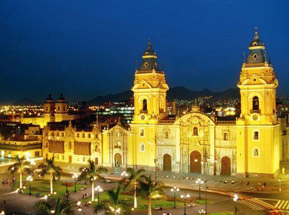
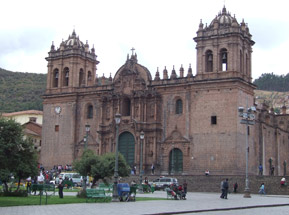
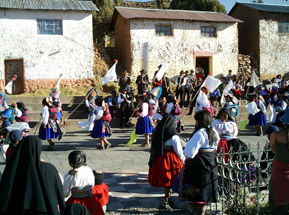
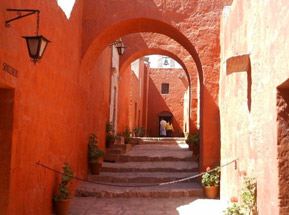
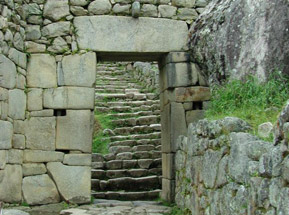
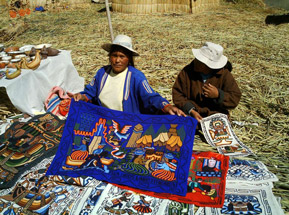
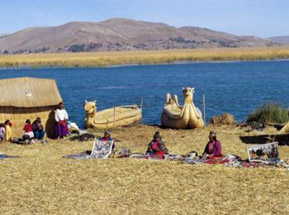
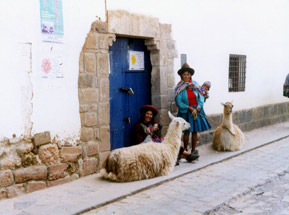
Home | History | Philosophy | Otto`s Team | References | Contact us | GTC
Ecuador - Peru - Venezuela - 2014

![]()

 Overview
Overview Travel Information A-Z
Travel Information A-Z Tour Recommendations
Tour Recommendations Login Tour Operator
Login Tour Operator